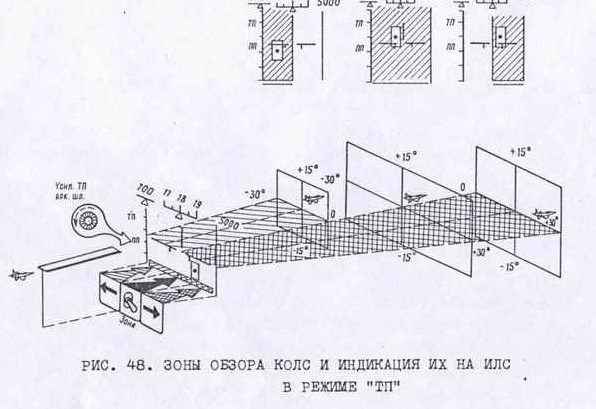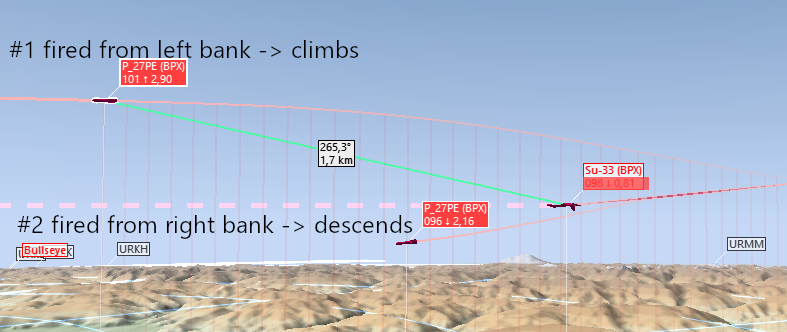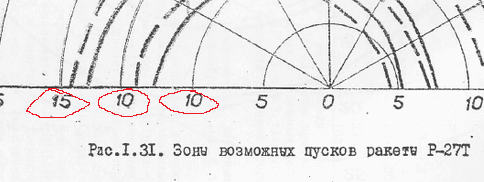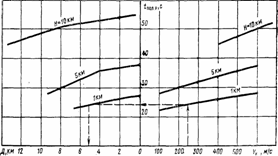-
Posts
939 -
Joined
-
Last visited
Content Type
Profiles
Forums
Events
Everything posted by BlackPixxel
-
In the available material you can see that the missile works for target maneuvering with overloads of up to 5 g.
-
Might have been wrong about the Radar/OLS interaction mode limited to ZPS in the MiG-29, that is just what a MiG-29 pilot once wrote to me. Both the MiG-29B document and the Su-27SK manual mention the interaction modes of Radar/OLS and how the target lock can transition between both sensor types. But none of them says what happens in the specific case of R-27R/ER being fired and the OLS becoming the primary sensor. MiG-29B document on page 171 says that the "ФСХ " algorithm sends the illumination = on signal from the launch of the missile until the end of illumination command comes from the "РКР" algorithm. It does however not specify under what condition the end of illumination command will be formed. In the block diagramm on the next page you can see that all kinds of information about the geometry and dynamics between target and fighter are sent to the РКР-algorithm, as well as information about the selected missile. No information about the currently used tracking channel (Radar/OLS) can be seen. The most reasonable thing to me seems to send the end of illumination command when the operation time of the missile ended (60 s).
-
In the MiG-29 it is a bit different anyway, because the combined Radar/OLS mode only exists in the ZPS setting. I think the OLS of the MiG-29 is simply to weak for anything else. The Su-27 on the other hand can also use the combined mode in the front hemisphere setting. In the combined mode, if one sensor loses the target, it will be tracked by the other one if possible. Nowhere does it say that the target illumination channel will turn off if the tracking transitions to OLS.
-
Are there any news for this issue? According to the available information the radar of the DCS F-16 is greatly overperforming in terms of detection range. Why has it not been corrected yet in such a long time?
-
What is actually missing is the fusion of Radar/OLS. Right now it is either radar or OLS. But when the target turns through the notch, the OLS should track the target while the radar should still emitt the SARH CW homing signal. There is no reason why the radar would switch off the target illumination signal. The MiG-29B document says that the illumination signal is active for the full lifetime of the missile. The thing with delaying the switch to OLS would just be a temporary solution to solve the flawed game mechanics resulting in an aircraft with OLS having zero chance of hitting a target changing aspect, while aircraft that don't even have OLS will hit those targets. Could you explain what you mean with R-23/24/27 switching to extrapolated trajectories before impact? Is this stated in some documents? I don't think those missiles know when they are about to hit the target, as they are guided from an interrupted CW signal, so they cannot meassure the range to the target.
-
The R-27 receives updates on both the 3D position vector and the 3D velocity vector of the target in the stabilized coordinate system. In the time diagramm you see it transmitting first the position deltas for X, Y and Z direction, and then the deltas in derivative (derivative of position = velocity) in X, Y and Z.
-
I am talking about something different. If the DCS F-15 fires an Aim-7 and the target turns through the notch quick enough, then the radar will keep illuminating the target the whole time. So the missile is guided the whole time, and can hit at any moment. In the russian aircraft, the lock will instantly transition to OLS as soon as the target enters the notch, and then the missile is no longer guided. In addition to that, the missile will then instantly turn into nearby chaff, even though they are not illuminated. And on top of that, even if there was no chaff and the lock transitions back to radar as soon as the target left the notch, the missile will have done a S-maneuver in the meantime, losing tons of speed. The OLS, that should help the Flanker + R-27 against targets turning through the notch (changing hemisphere) makes it actually much worse in DCS thanks to the 3 reasons mentioned above. The R-27R/ER becomes practially useless in the game unless fired from a distance where the target does not have time to change aspect. Chizh mentioned a while ago that they would change it so that the lock will only transition to OLS if for 4 seconds the target cannot be found again in radar. This would remove the issue in most of the cases, and would be a welcome change. The way it is right now I would rather have no OLS at all, as it is degrading the R-27R/ER PK in multiplayer by alot!
-
R-27 full rework with CFD would be nice to have, but what is more important is that the guidance bugs that result of the IRST get solved (radar instantly transitions to IRST instead of staying in extrapolation mode for a short time, missile instantly turns into unilluminated chaff when lock transitions to IRST). Those issues really make the Su-27/Su-33/MiG-29 unable to properly attack targets in multiplayer. The only weapon that works somewhat reliable is the R-27ET, but with the clouds rework this will change as well. Will the fix of these FC3 weapon systems also be delayed that much, or can we expect it earlier?
-
Was this said by someone from ED? Would be a shame. Right now all 4th gen redfor aircraft cannot be used in aerial combat, because all of them suffer from the same weapon bugs. How many years are we supposed to wait until we can properly fly those redfor aircraft in multiplayer?
-
[100☭] BlackPixxel - Ka-50
-
[100☭] BlackPixxel - RED Su-33
-

EOS scan zone selection does nothing
BlackPixxel replied to Cmptohocah's topic in MiG-29 for DCS World
Yes, the IRST scanzones are broken. Keep in mind that the IRST scanzones in the MiG-29 work very different to the Su-27. Here is what it should be doing: The scanzone will not shift to the left or right, as it does in the Su-27. Instead, it will only cover either the left (-30° to 0°) or the right (0° to +30°) half of the full scan (-30° to + 30°). As a result, the update rate of the IRST gets twice as fast in the selected zone. The position of the marks on the HUD will not change. There simply won't be marks in the half of the HUD that is not part of the scanzone. -
The F-15 simply does not have a damage modell for overstressing the airframe. On the Su-27 deflecting the rudders during high speed flight causes vertical stabilizers to ripp of, on the F-15 full deflection nothing happens because such thing is simply not modelled.
-
There appears to be an error in the safety maneuver code for the R-27. The more the aircraft is banked to the LEFT, the more the missile flies UPWARDS during the safety maneuver. The more the aircraft is banked to the RIGHT, the more the missile flies DOWNWARDS during the safety maneuver. Most extreme case is when firing a missile from 179° left bank and another one from 179° right bank. From 0° bank angle the missile flies perfectly. The problem is that this unwanted loft or descend of the missile causes them to pull a lot of G (up to 10) to get back on the right path. This greatly reduces their average speed and range. In the attached trackfile I fire one missile from high left bank, then high right bank, then high left bank and high right bank. So the first missile goes up, the second goes down, the third goes up and the fourth goes down. The fifth missile is fired from 0° bank angle. Even though the fith missile is fired last, with a distance of almost 10 km to the first missile and from a lower airspeed, it is able to overtake all the other missiles and reaches the target much earlier. Some of the earlier missiles do not even reach Mach 3.5 because of the buggy safety maneuver. The missile fired from 0° bank angle reaches Mach 4.13. I am sure that there is some error in some trigonometric function in the coding of the missile's safety maneuver. ER_bank.trk
-
Coxy is talking about this issue, where the timer for the special afterburner does not get reset by a repair unless the timer is already at 0:
-
I really like those new sounds when firing missiles from the rail launcher, sounds just like in the recent Su-30SM R-27R video!
-
For the speed of 400 m/s it is exactly on the 60 s line, and on the line of 16 km range. So 2*400 m/s * 60 gives us 48 km, and from the chart we can add the 16 km. So 64 km in total AT BEST (under the condition that the missile has maximum seperation after 60 s). While the launch zone chart gives a launch range of 65 km for 25 % less speed for shooter and target. I don't really get what the flyout chart is supposed to show, as it is clearly not what I think it shows. Or it is for earlier prototypes.
-
I don't quite understand the R-27 flyout chart. Let's look at the R-27ER one, with the fighter = target = 1100 km/h condition. The speed is about 305 m/s. For that speed, the flighttime of the missile is about 58.5 s, and the max seperation from the fighter is 20 km in the chart. In 58.5 s, each aircraft travels 17.9 km. So they would meet after that time if they were seperated by 35.8 km. To get the 65 km engagement range from the launch range chart, the missile would have to be about 30 km ahead of the fighter. But the flyout chart says that the maximum seperation for that speed is just 20 km. With the R-27R flyout chart it also does not fit.
-
Thanks! I was wondering why the R-73 would outrange it at 1000 m and 5000 m, but then I noticed this:
-
They should not loft, and even without loft they greatly exceed the chart. Just maddog a 120B on a target so they don't loft to check the range. Also the rear hemisphere ranges are greatly exceeded.
-
@Chizh Could you also upload the scan of the opposite site of the page? I think we have never seen the R-27T chart before. And do you also have a chart for the R-27ET? Thank you!
-
I haven't seen the flyout charts posted here, so here they are. For the R-27R I only found the low res version. They show the flighttime and how far the missile will seperate from the fighter if the fighter would keep flying straight with constant speed. It should be roughly equal to the rear aspect ranges from the launch zone chart. I am unsure if the seperation value is the maximum seperation from the fighter during the whole flight, or the seperation from the fighter at the specified flight time. I think it is the latter.
-
I think what most are actually looking for is that the game mechanics for the R-27 guidance get fixed, just as Aim-120 guidance was improved with the autopilot rework. I mean, I would not mind if my R-27 would have half the range, if only there was not this stupid mechanic where everytime a target turns through the notch my radar switches instantly to EO and the missile turns into unilluminated chaff.
-
The number is there for all variants. T/ET and P/EP are fire and forget. So it is not about the illumination time of the radar.










